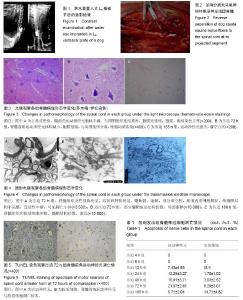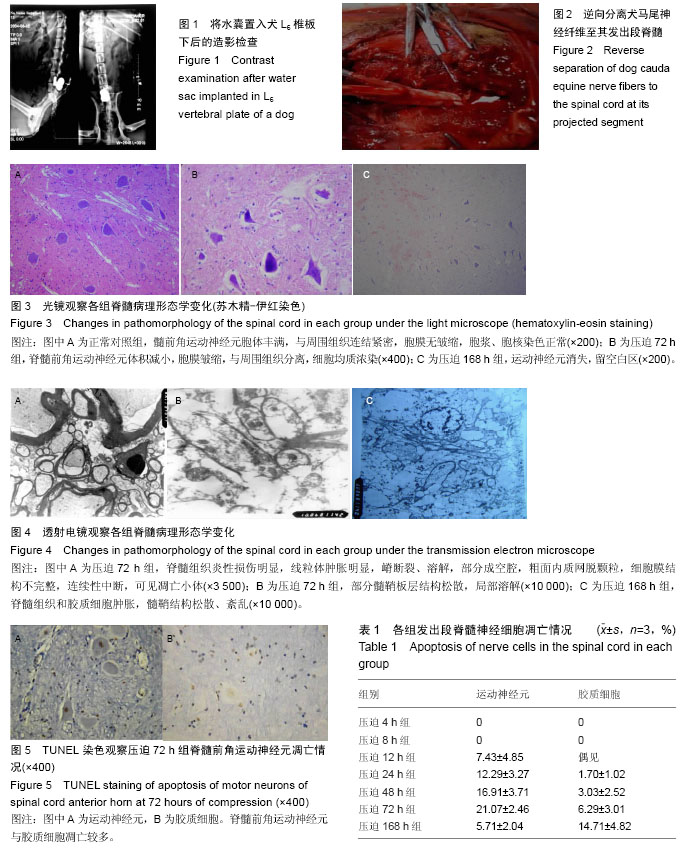Chinese Journal of Tissue Engineering Research ›› 2016, Vol. 20 ›› Issue (40): 5973-5978.doi: 10.3969/j.issn.2095-4344.2016.40.007
Previous Articles Next Articles
Pathological changes in the spinal cord of a model of acute cauda equina compression
Wang Zhan1, Li Hao-peng2, He Xi-jing2, Hao Ding-jun3, Zhang Kun1, Chen Ming-xia4, Lei Ting5
- 1Department of Orthopedic Trauma, 3Department of Spine, Xi’an Honghui Hospital, Health Science Center, Xi’an Jiaotong University, Xi’an 710054, Shaanxi Province, China; 2Second Department of Orthopedics, the Second Clinical College of Xi’an Jiaotong University, Xi’an 710003, Shaanxi Province, China; 4Room of Electron Microscope, 5Department of Pathology, Health Science Center, Xi’an Jiaotong University, Xi’an 710061, Shaanxi Province, China

